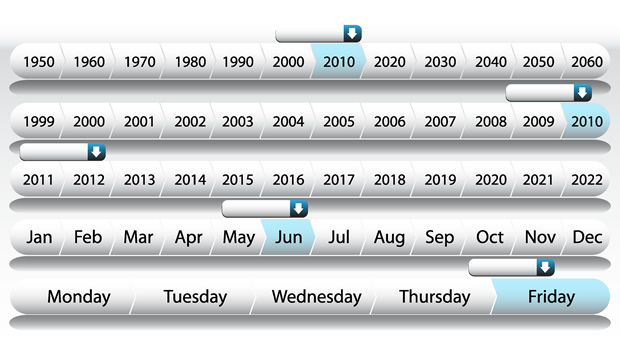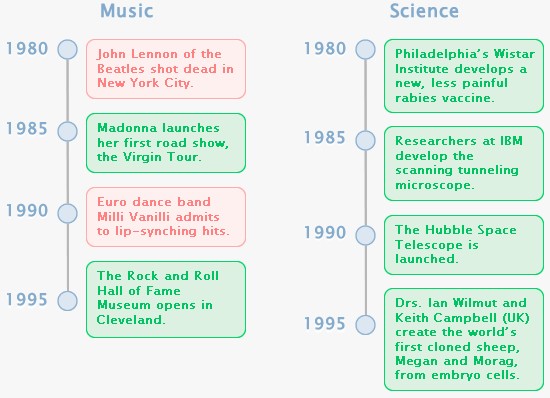I spent a lot of time over the past few months reading about the design of timelines and trying to understand what makes a well designed timeline.
I soon realized that I had only discovered the tip of the iceberg, and that there is a lot of thought that needs to go into designing an interactive timeline.
This blog-post is an attempt to put together what I learnt about the design of timelines.
What is a Timeline?
A timeline is an actual picture of events that happened in history. Timelines can be linear or comparative.
A linear timeline shows a picture of events as they occurred in a certain period of time. Use a linear timeline for one subject and time frame. A linear timeline can be written horizontally or vertically.
A comparative timeline shows two or more subject areas which occurred at the same time; it shows readers the “big picture.” A comparative timeline might compare historical events in two or more countries or compare two or more subjects like Music and Science.
Why Use Timelines In eLearning?
You can use timelines in your elearning courses in order to provide a framework within which content can be presented. Timelines ensure that your content is chunked and make your courses interactive. Chunking delays mental fatigue and increases comprehension.
The Trap: Chronology Or Timeline?
Sometimes, what you think is a timeline, may not actually be a timeline. Often, what passes for a timeline is actually a chronology. A timeline shows actual spans of time, with proportional measurements for days, months, years, decades or centuries, depending on quantum of time involved. On the other hand, a chronology shows the momentum of a series of events. It may make more sense to present the information as a list, or as a series of images with associated text labels.
| These Are Timelines | These Are Chronologies |
| Timeline Of Egyptian Protests | Arab Spring: An Interactive Timeline Of Middle East Protests |
| South Florida’s Changing Landscape And Fort Lauderdale’s Growth | Historic Year For Gold |
| Rig Disaster | Ages of English Timeline |
Essential Design Questions To Ask
Here’s a small list of essential questions that we should ask ourselves when designing our timelines.
- Is this timeline about events that unfolded over hours, days, months, years, decades or centuries?
- Should equal periods of time be represented by equal space on the timeline?
- Does it make sense to combine the timeline with other visuals such as maps, graphs or pictures?
- How much text do you need to make the timeline understandable?
- Is the timeline helpful and easy to understand?
- Do the visuals add any value? Are they conveying something that text alone cannot convey?
- Does it really need to be a timeline, or would a series of images with text labels be equally effective?
Designing an effective timeline is much tougher than it seems. Don’t just try to use a timeline because it looks cool, instead make it meaningful and interactive so that the information that you present is crisp and crystal clear.
I’d love to hear about your experiences with designing timelines. Feel free to drop me a line.





















